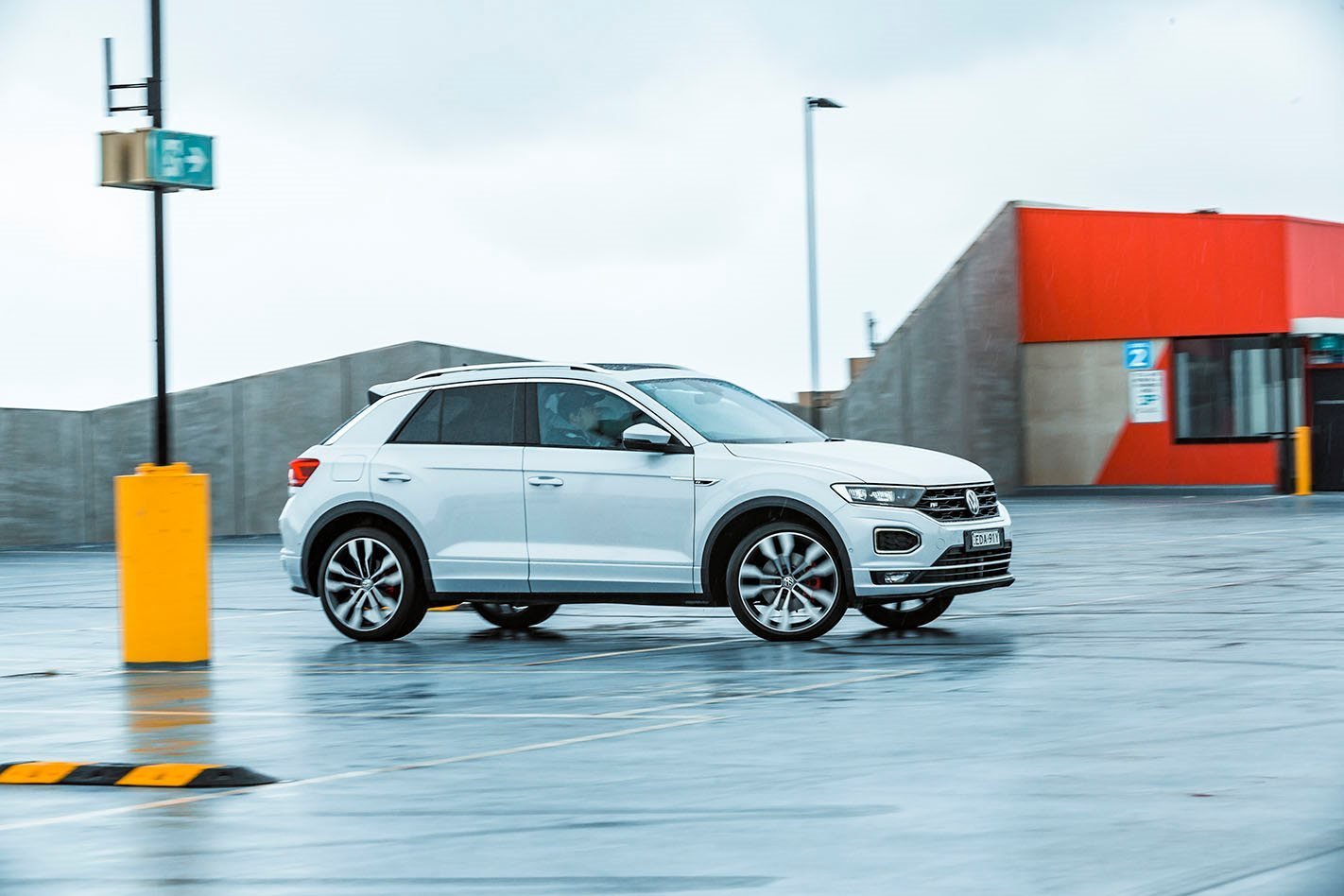
Score breakdown
Things we like
- Hatchback performance and handling
- Sleek looks
- Well equuiped
Not so much
- Hard plastics in cabin
- Limited choices
What stands out?
Based on the Golf hatchback, the T-Roc is the sportier of Volkswagen’s double-pronged entry into the small-SUV market along with the T-Cross. It’s propelled by a powerful 2.0-litre turbocharged petrol engine and handles bends incredibly well. It comes with excellent smartphone integration and a safety suite that includes autonomous emergency braking.
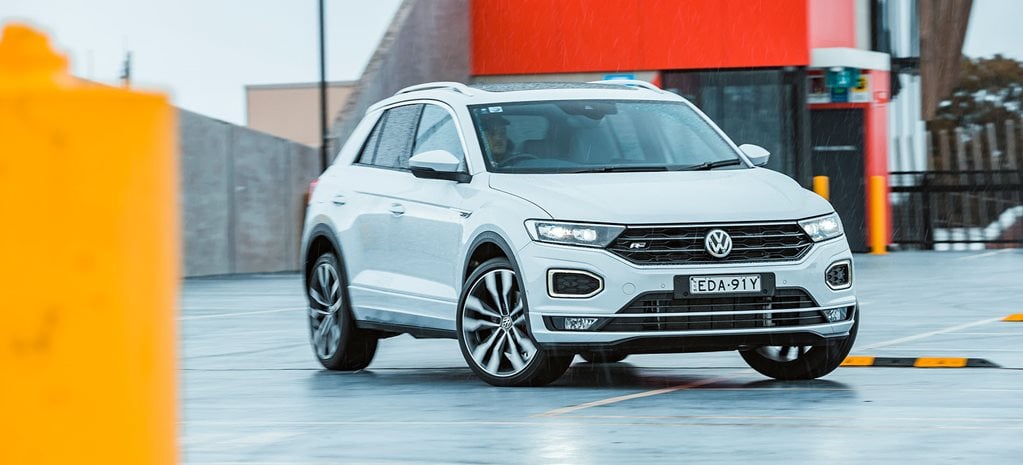
What might bug me?
Driving after a puncture. The T-Cross has a space-saver spare wheel, which limits the recommended top speed to 80km/h.
Paying more for fuel: the turbo engine requires premium unleaded, which costs more than regular unleaded.
What body styles are there?
Five-door wagon only.
The T-Roc is currently only available in Australia with all-wheel-drive only, with a front-driving version arriving in November 2020.
It is classed as a small SUV lower priced.
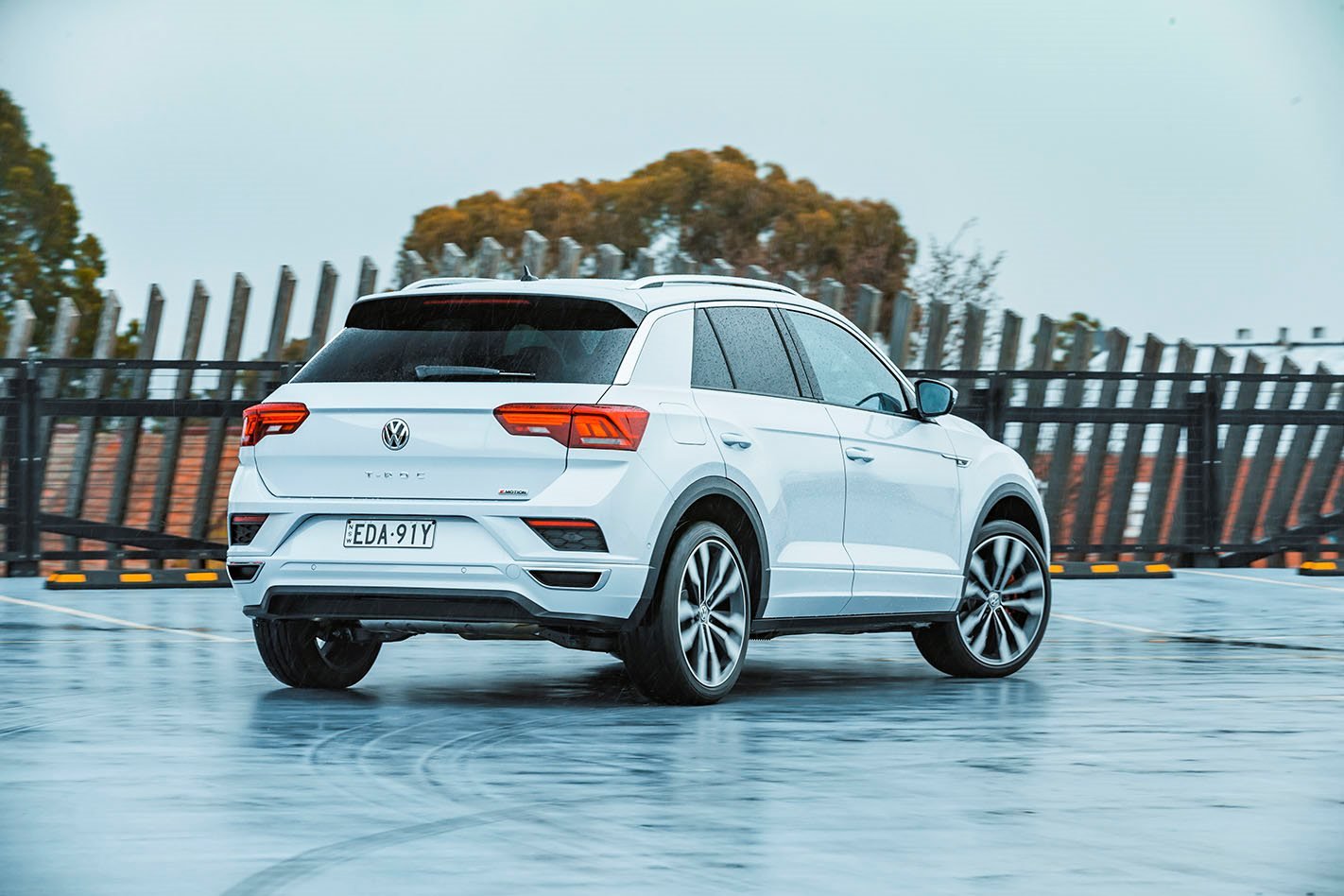
What features do all T-Roc versions have?
The more affordable T-Roc 110TSI will arrive in Australia in November 2020, until then there is just the highly-specced 140TSI which brings a myriad of features including:
- An 8.0-inch colour touchscreen from which you can control the sound system and other cabin functions.
- A six-speaker sound system with an AM/FM radio, a CD player, an SD card slot, Aux and 4 x USB inputs, and Bluetooth audio streaming.
- Support for Apple CarPlay and Android Auto. If you plug in a compatible iPhone or Android smartphone, some phone apps – including mapping and music – are mirrored on the touchscreen display and can be controlled from there.
- A reversing camera with guidelines, and parking sensors front and rear.
- 10.25-inch digital gauge cluster with customisable displays.
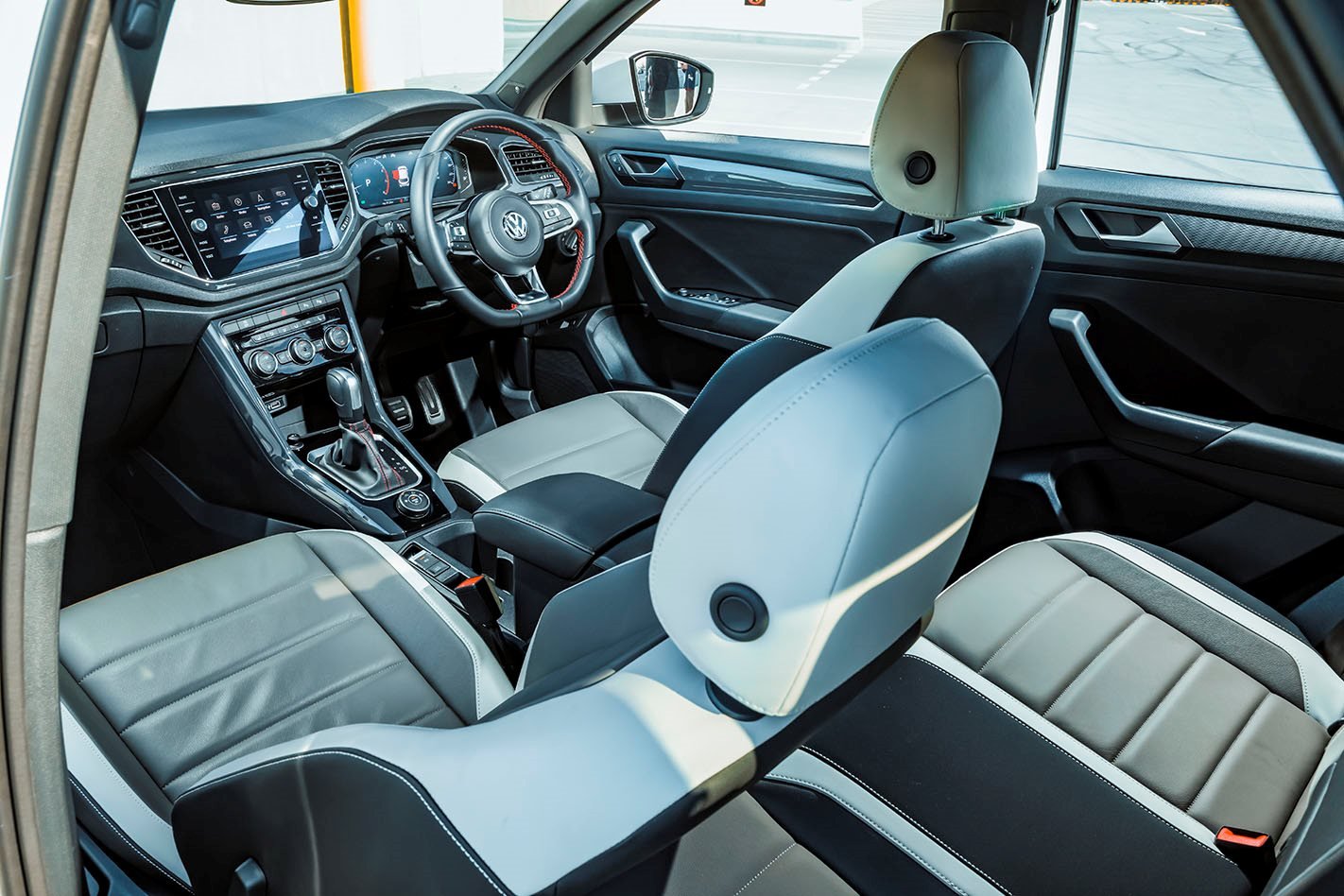
- Active safety including autonomous emergency braking, lane-keeping assist, lane departure warning, driver fatigue detection, blind-spot monitoring, rear-cross traffic alert, and vehicle distance warning.
- Adaptive cruise control with speed limiter.
- 7-speed DSG (direct-shift gearbox) automatic transmission and 4MOTION all-wheel-drive.
- Keyless start and entry.
- Rain-sensing windscreen wipers.
- LED headlights that switch on automatically in low light, LED daytime running lights, LED tail-lights and fog lamps.
- LED ambient interior lighting.
- Auto-dimming rearview mirror, and power-folding heated door mirrors.
- Dual-zone climate control air-conditioning, and rear-seat air vents.
- A leather-wrapped steering wheel that carries buttons for operating the cruise control, the audio system, and your phone.
- Cloth sports seat with front lumbar support.
- 18-inch aluminium alloy wheels, which are lighter and more stylish than steel wheels.
- A space-saver spare wheel (with a recommended top speed of 80km/h).
- Tyre pressure monitoring, which alerts you if a tyre is losing air.
- Six airbags. Electronic stability control, which can help control a skid or slide (all new cars must have this feature).
The T-Roc comes with Volkswagen’s five-year, unlimited-kilometre warranty.
Which engine uses least fuel, and why wouldn’t I choose it?
So far there is only the one engine available in a T-Roc – the 2.0-litre 140kW four-cylinder turbocharged petrol engine that consumes 7.2 litres/100km on the official test (city and country cycles combined).
It is coupled with a seven-speed DSG (for direct-shift gearbox) automatic transmission. DSG autos work much like a manual gearbox with robotic control. They shift very smoothly and quickly and save fuel, but cannot match the fluid take-off from rest that you get with conventional or CVT autos.
A more economical engine will become available in November 2020 when the T-Roc 110TSI Style arrives with a 1.4-litre turbocharged engine matched to an eight-speed torque converter (conventional) automatic transmission with front-wheel-drive. This will consume about 6.2 litres/100km.
One reason you wouldn’t choose the 110TSI is that you’d prefer 140TSI’s sharper performance and all-wheel-drive traction.
What key features do I get if I spend more?
With the just one version of the T-Roc available for now, the only extras are option packs and premium paint. The T-Roc comes with two standard colours, Flash Red and Pure White, with Atlantic Blue Metallic, Indium Grey Metallic, White Silver Metallic and Deep Black Pearl Effect cost about $600 extra.
Option packs include the Luxury Package that for about $3500 adds Vienna leather-appointed seat upholstery, heated front seats, panoramic sunroof.
For about $2000 you can the Sound & Style Package, which brings adaptive dampers with driving profile selection to suit different conditions, bigger and fancier 19-inch wheels, progressive steering that tightens to suit sporty driving, and a 300W beats premium sound system.
Does any upgrade have a down side?
How comfortable is the T-Roc?
The T-Roc’s dash layout is neat, logical and fairly easy on the eye, but is tainted by hard plastic surfaces around the cabin. It looks ultra-durable but after stepping out of something like a Mazda CX-30, the T-Roc’s scratchy materials and hollow door slam sounds have you wondering what the margins on this $41K car must be like.
But the touchpoints are pleasant; the steering wheel is upholstered in fine leather, the central touch screen is not excessively proportioned and presented with sharp graphics.
Look beyond the superficial and there is substance here. The packaging is fundamentally good, with decent space upfront and reasonable kneeroom and headroom (for a relatively compact crossover) in the rear.
The driver’s seat is easily adjusted for a tall (leggy) driver and the view from the helm is very good.
The 2596mm wheelbase is actually 41mm shorter than a Golf Mk7, so temper your expectations if you regularly carry long-legged adult passengers. Thoughtfully, the optional sunroof doesn’t impinge on rear passenger headroom, and as a result, there are bulging recesses in the headlining for taller passengers.
The suspension has a sporty tune and with the 18-inch rims and low-profile tyres will feel jarring over smaller ruts. If you opt for the Sound and Style pack you gain adaptive damping that offers a softer-riding comfort mode.
What about safety in a T-Roc?
Every T-Roc has the mandatory electronic stability control, auto wipers, a reversing camera, front and rear parking sensors, daytime running lights (which help other drivers see you), and six airbags.
In addition, each T-Roc version has city-speed autonomous emergency braking, a highway-speed forward collision alert, lane-keeping assistance, and a driver fatigue monitor.
Two airbags protect the driver and front passenger’s upper bodies from frontal impacts, and a third protects the driver’s knees. One outside each front seat protects at chest level from side impacts. And curtain airbags extending down each side of the car at head level protect front and rear passengers from side impacts.
The T-Cross’ standard driver assist systems use radar and camera sensors to monitor the roadway ahead when you’re driving. Its autonomous emergency braking, which Volkswagen calls Front Assist with City Emergency Brake, operates at speeds up to 30km/h and can automatically brake the car if it concludes a collision is imminent (typically with a sharply slowing vehicle ahead).
Lane-keeping assist uses the camera to monitor lane markers. At speeds over 55km/h, if it concludes you are drifting out of your lane – perhaps from distraction – it will gently adjust the steering in an attempt to bring you back. If you continue to drift, it will vibrate the steering wheel and flash a warning.
Fatigue Detection monitors your movements of the steering wheel. If it suggests you might be falling asleep, it proposes you take a break.
Should none of this prevent a crash (perhaps because you have been hit from behind), Multi-collision brake acts to prevent your T-Roc drifting into the path of another vehicle after impact, automatically applying the brakes.
The T-Roc 140TSI also has blind-spot monitoring and rear-cross traffic alert – both relying on rear-facing sensors. The former helps you avoid changing lanes into the path of an adjacent or overtaking vehicle, warning you with a light in the exterior mirror and even seeking to steer you away from danger. The latter works when you are reversing, looking to either side behind you for vehicles crossing on a collision course.
The Australasian New Car Assessment Program (ANCAP) has rated the T-Roc at five stars for safety, most recently in April 2020.
I like driving – will I enjoy the T-Roc?
The T-Roc is entertaining to drive but can also be comfortable and relaxed. While higher-riding than the Golf it feels very much like the hatchback on the road.
The 140kW turbo isn’t the most refined at idle, but it’s a fundamentally good engine. Pair it with the T-Roc’s all-wheel-drive system and you have a combination that’s capable of deploying almost all of that power out of tighter corners.
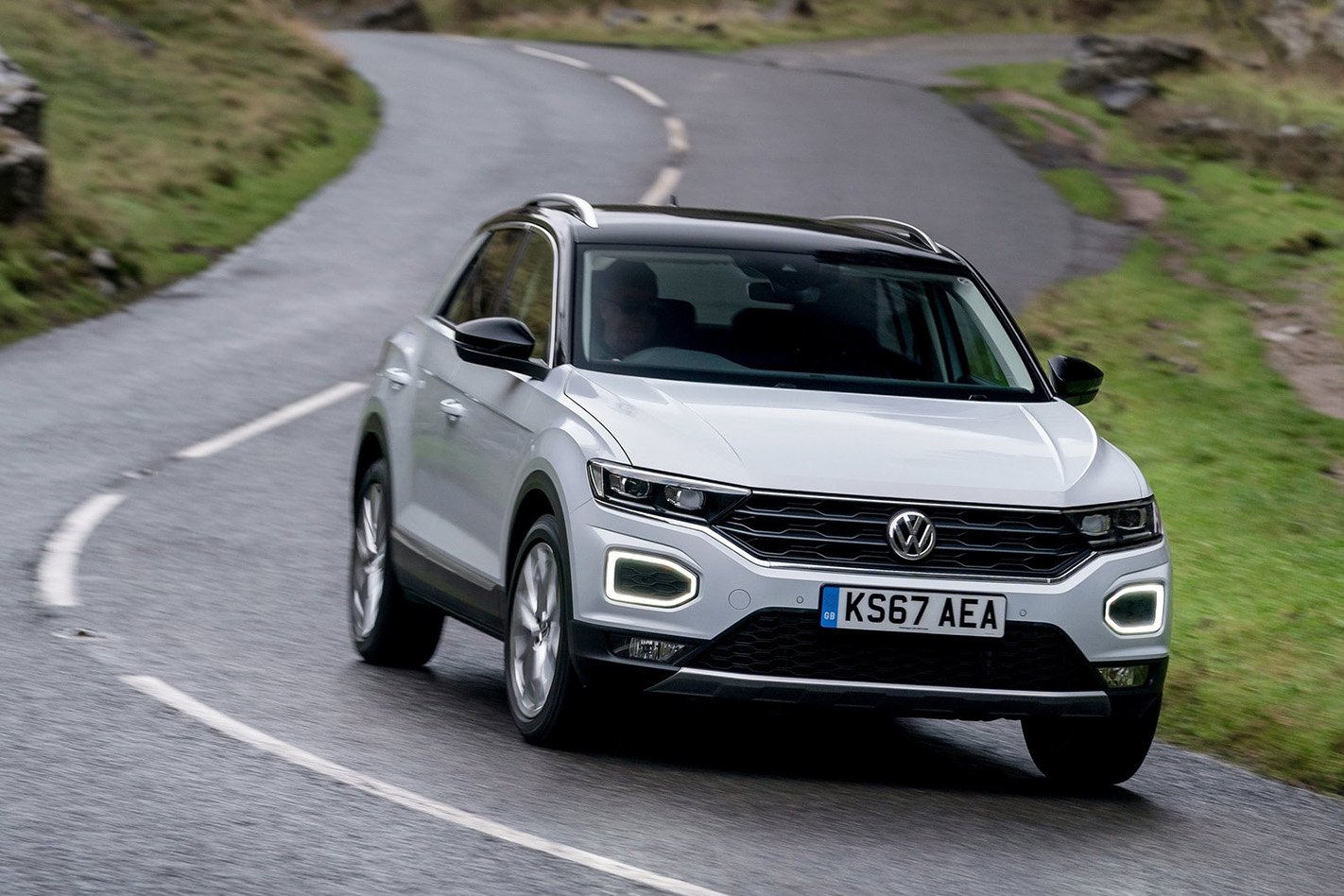
The seven-speed dual-clutch automatic is a willing participant and is helped by the fact that body control is very good indeed.
The adaptive dampers, available with the Sound and Style pack has a slick Custom mode where you can specify damper rates (suspension settings), gearbox response, steering weight and so on. Besides that, it’s easy enough to shuttle between the two other drive modes that you’ll probably use – Comfort and Sport.
How is life in the rear seats?
Legroom is tight for taller people but there’s and excellent head even with the optional panoramic sunroof.
There are air vents in the back, a fold down centre arm rest with two cup holders, rear door bins, and storage pockets on the back the of the front seats.
Child car seats are well catered for with two ISOFIX anchor points and three top-tethers.
How is it for carrying stuff?
The all-wheel-drive T-Roc has a 392-litres boot space and up to 1237 litres with the 60:40-split rear seats folded down.
With the rear seats upright the boot space is 830mm long and you can an item up to 1532mm long behind the front seats with the back seats folded down.
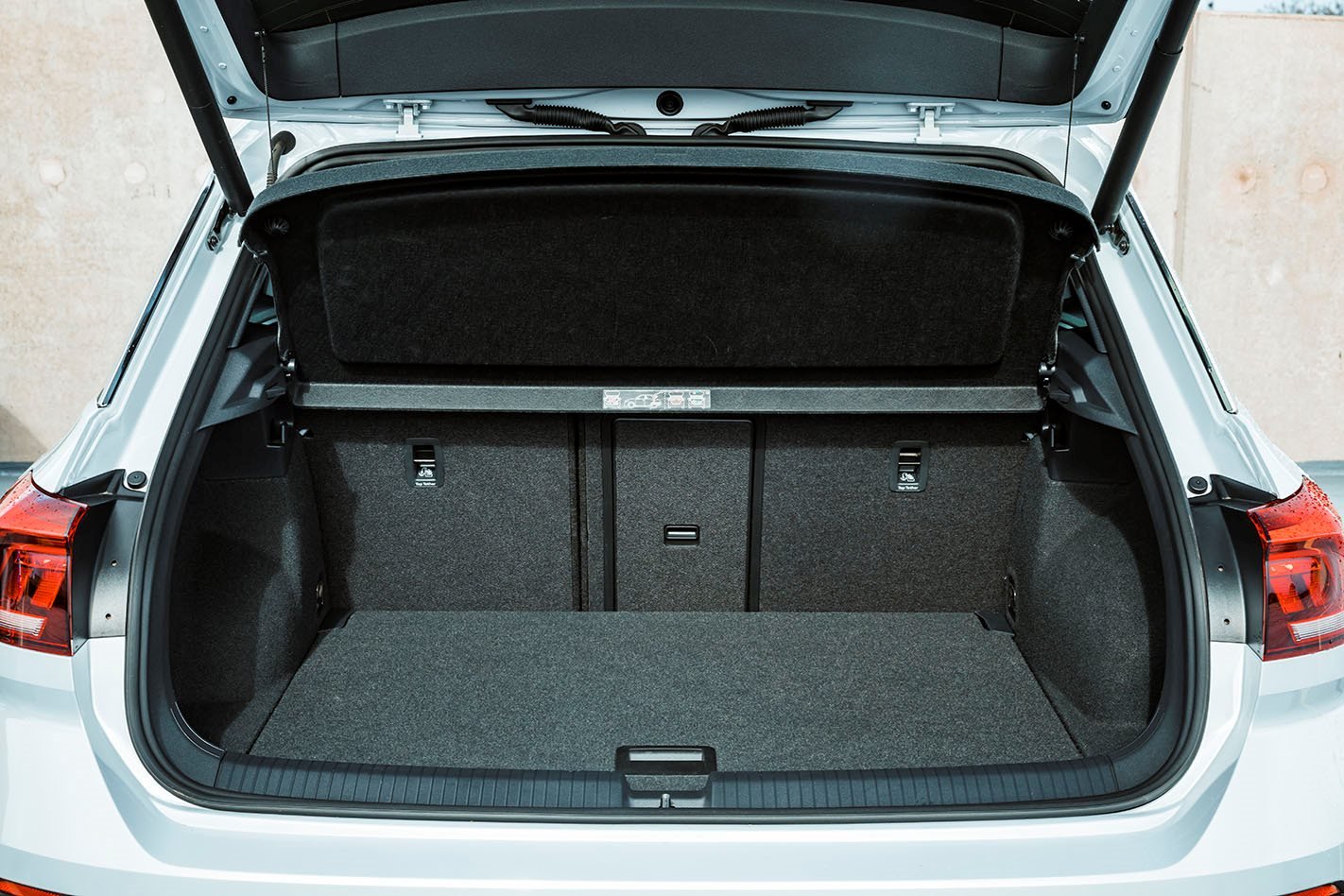
The T-Roc has a handy braked towing capacity of 1700kg or 740kg unbraked. The owbar load limit is 80kg.
Where is it the T-Roc made?
The Australian-market Volkswagen T-Roc is manufactured in Portugal.
What might I miss that similar cars have?
The T-Roc is one of the newest and better equipped small SUVs on the market and one of the most powerful too, so there isn’t too much that it misses out on, compared to its rivals.
A notable omission, for now, is the lack a more affordable front-wheel-drive option, as available with its sportier, the Toyota C-HR, Hyundai Kona, Mazda CX-30 and Kia Seltos.
This will be rectified when the T-Roc 110TSI arrives at the end of 2020, or you can check out the less sporty Volkswagen T-Cross.
It’s also worth noting the Skoda Karoq, which is another close relative is already available with both 110TSI FWD and 140TSI AWD powertrains.
The upper-spec AWD versions of the C-HR, CX-30, Kona and Seltos have a more refined interior trim.
I like this car, but I can’t choose which version. Can you help?
The 140TSI Sport is the only version available at the moment.
That said we recommend spending the extra $2000 for the Sound and Style pack with adaptive chassis control brings noticeable improvements to ride comfort and handling, along with the fancier 19-inch wheels, progressive steering and the 300W beats premium sound system.
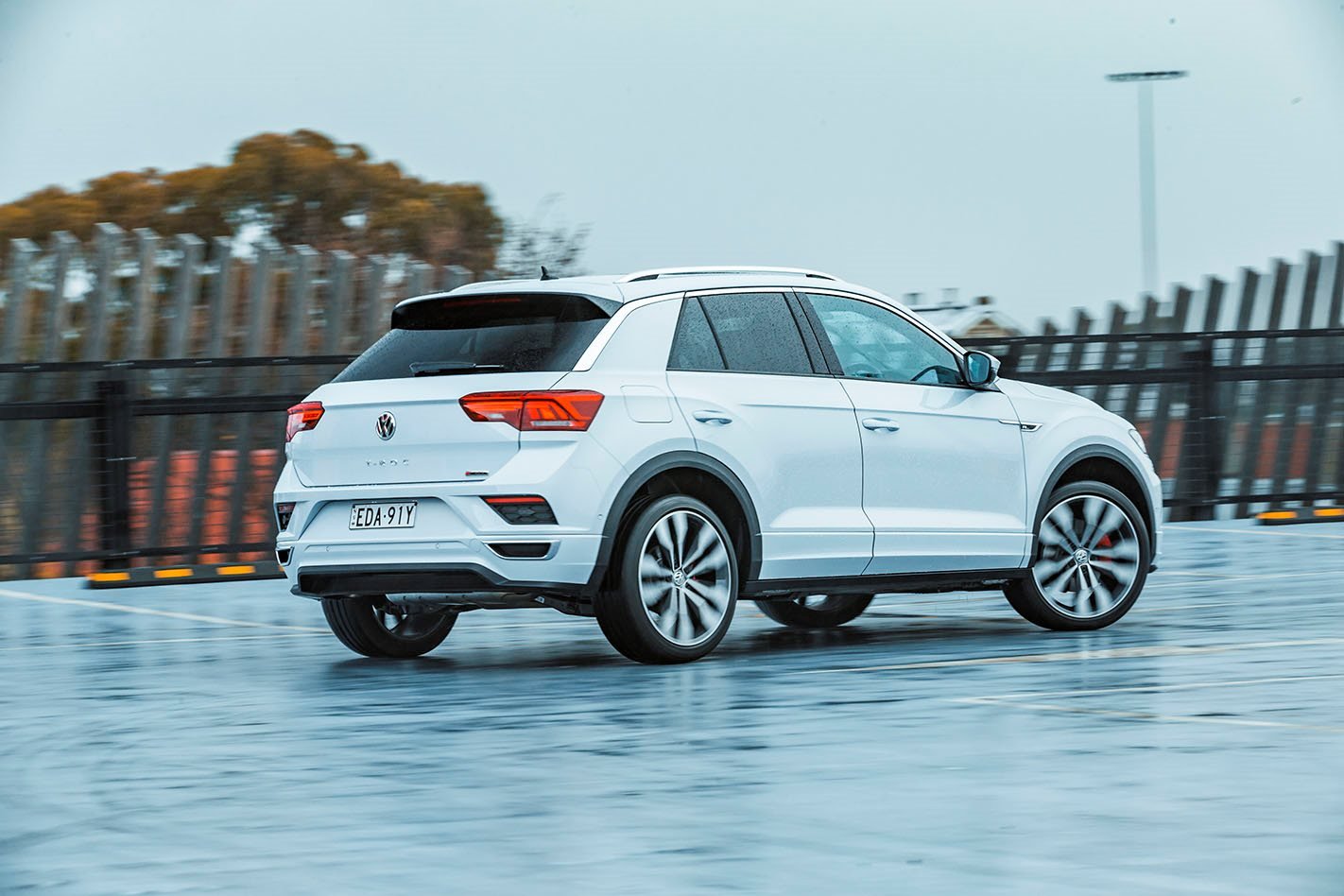
Are there plans to update this model soon?
The T-Roc arrived in Australia in July 2020 with 140TSI Sport, and a 140TSI X launch edition that brought additional features for an additional $2000.
A more affordable front-wheel-drive 110TSI version is due to arrive in November 2020.
Don’t expect an update before mid 2022, though we may see more special edition versions before then.
Score breakdown
Things we like
- Hatchback performance and handling
- Sleek looks
- Well equuiped
Not so much
- Hard plastics in cabin
- Limited choices



